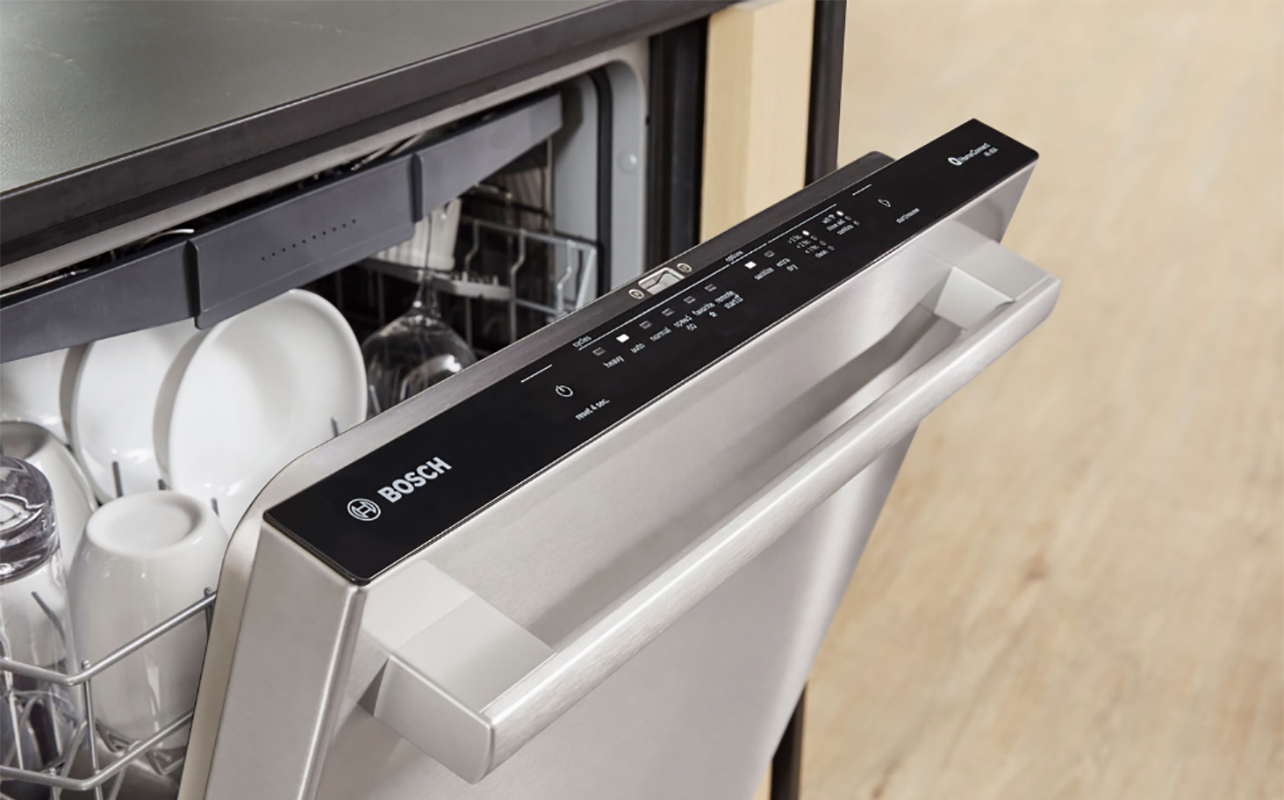
It can be really frustrating to open your dishwasher after a cycle and find it filled with dirty water. Not only does it mean your dishes aren’t clean, standing water can also lead to unpleasant odours. This can also cause potential damage to your appliance. A dishwasher that isn’t draining properly is a common issue. But in many cases, it’s one you can resolve yourself with a little know-how. Taking the time to troubleshoot drainage issues early can save you from costly repairs and help extend the life of your dishwasher.
Before you start shopping for a new dishwasher, try these smart, simple troubleshooting steps.
Why your dishwasher won’t drain: first, understand the system
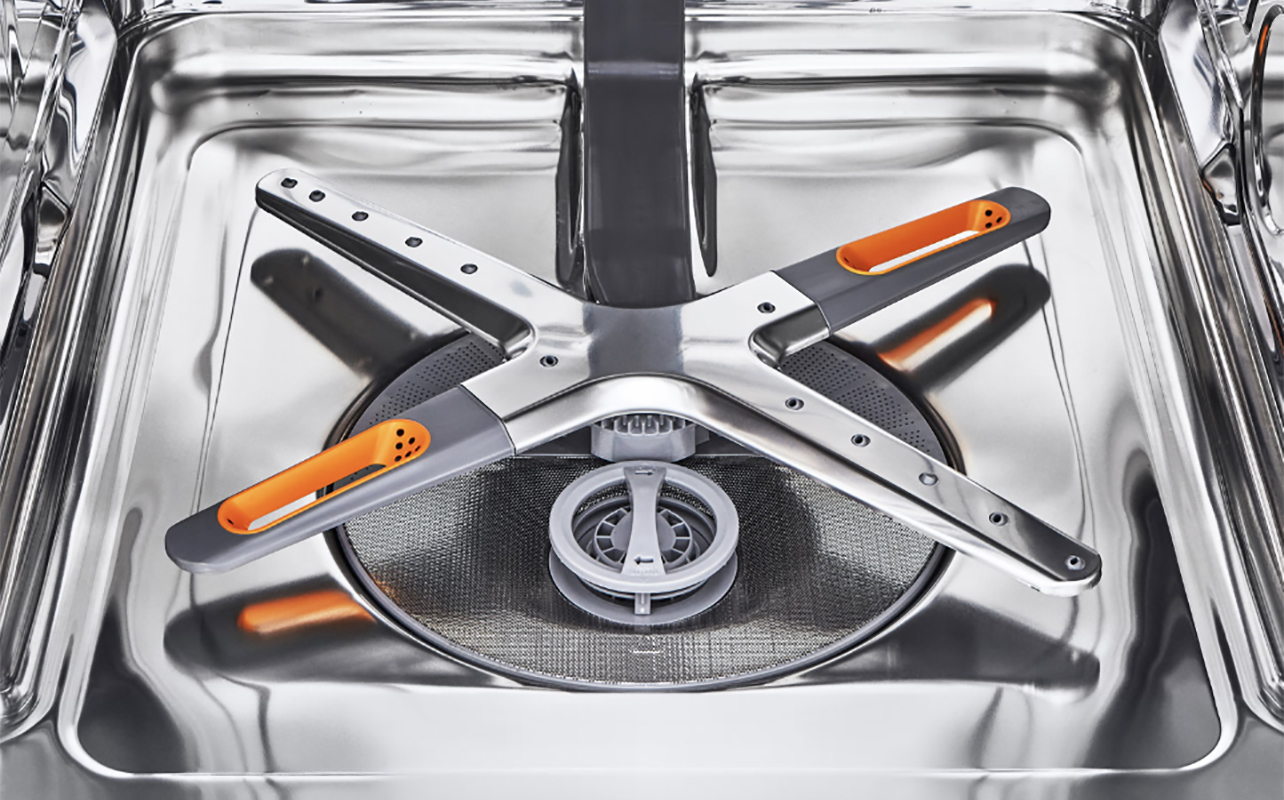
Dishwashers are smarter than ever, but the drainage system is fairly straightforward. How it works is that after the rinse cycle, dirty water is pushed out through a filter, then carried away via a drain hose. It can be connected to your kitchen’s garbage disposal or an air gap to prevent backflow.
When one part of that process gets blocked or fails, water stays put and your dishwasher can’t do its job. You’ll usually notice:
- Pooled or standing water in the base of the dishwasher
- Dishes that feel slimy or still dirty after a cycle
- Musty or unpleasant smells
- Unusual noises during or after the wash cycle
Let’s dive into what might be going wrong and how to fix it.
Common causes of drainage issues
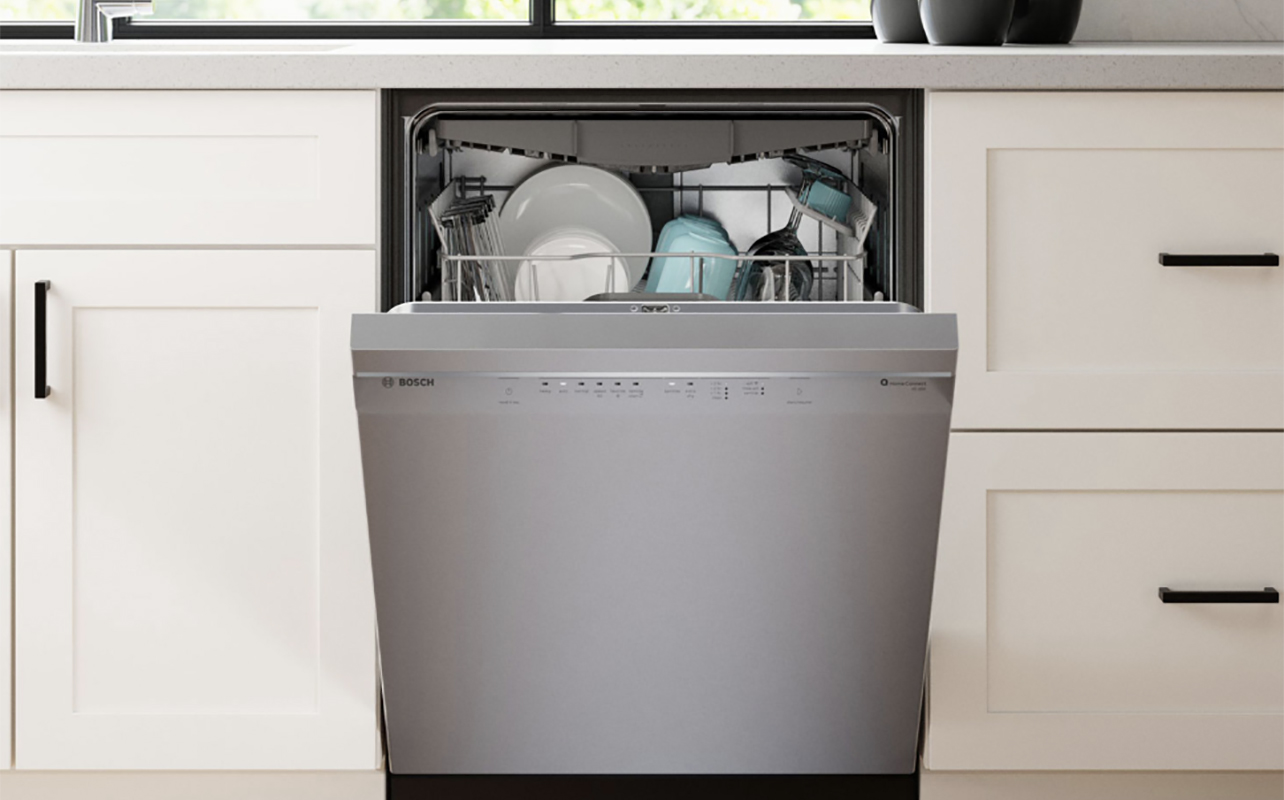
Drainage issues are typically caused by something minor. But if left unchecked, they can snowball. Here’s what to check first.
Clogged filters
Over time, food debris and grease can build up in the dishwasher’s filter. This can prevent water from draining properly. Most modern dishwashers have an easily removable filter under the bottom rack. Make sure to clean this regularly. If you notice that water isn’t draining, mannually scoop out enough pooled water until you can get to the filter. Open it up and check for blockages.
Blocked drain hose
If the drain hose is kinked, clogged, or not installed correctly, water can’t exit the appliance efficiently. This is especially common after moving or installing a new dishwasher. You may need to pull the dishwasher out and inspect the drain hose.
Garbage disposal blockages
In some homes, the dishwasher connects to the kitchen’s garbage disposal. If the disposal is clogged or if the knockout plug wasn’t removed during installation drainage can be affected.
Air gap issues
Some dishwashers use an air gap (a small cylindrical fixture near the sink faucet) to prevent backflow. If the air gap becomes clogged with debris, it can block the water from draining.
Faulty drain pump
The drain pump pushes water out during the drain cycle. If the pump motor fails or gets blocked, water may remain inside.
Incorrect detergent usage
Using too much detergent or the wrong type can create excess suds. This disrupt the normal flow of water and can leave standing water behind. Double check the manual to see what type of detergent is recommended. Try an alternative to see if that solves the issue.
Step-by-step troubleshooting guide
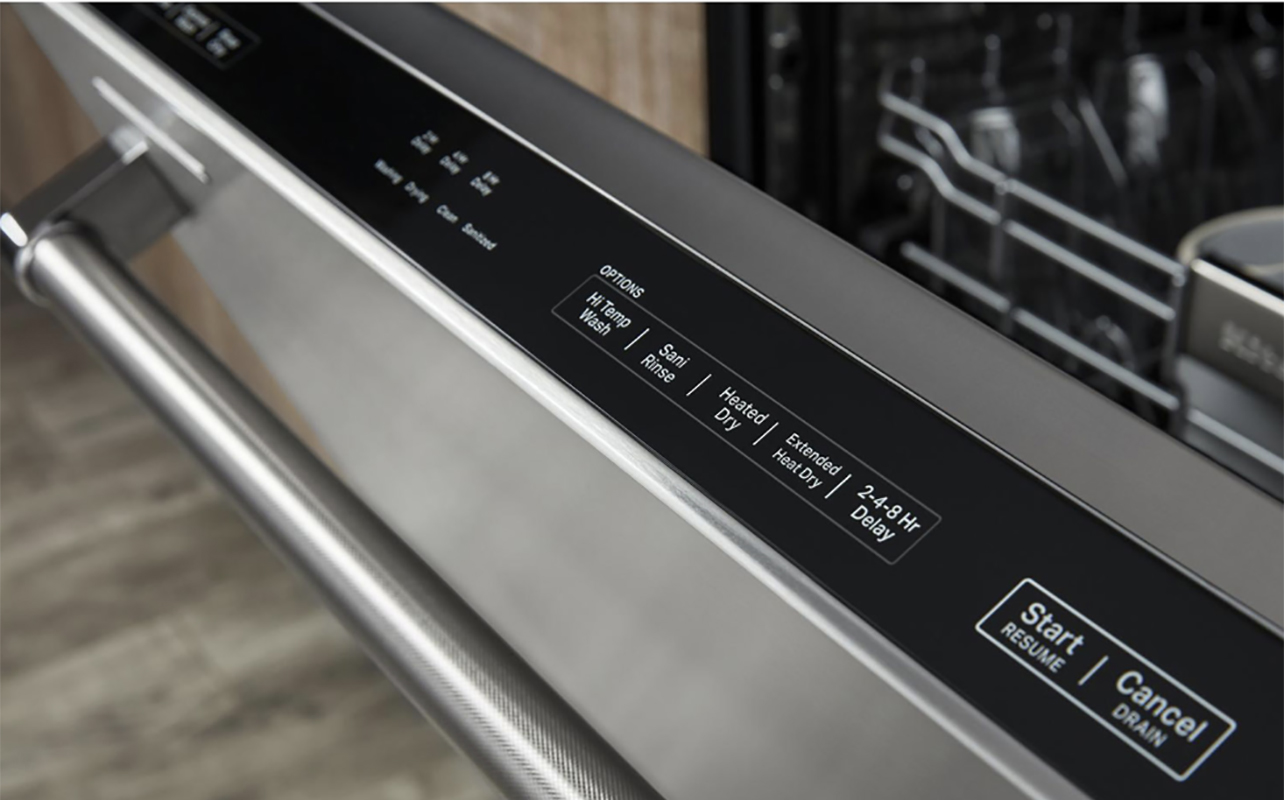
Before diving into any DIY fixes, always disconnect the dishwasher from power and water for your safety. Then, you can follow these simple steps.
Step 1: Inspect and clean the filter
- Remove the bottom rack to access the filter.
- Twist and lift the filter out of the base.
- Rinse it under warm water and scrub gently with a soft brush.
- Wipe down the area around the filter housing.
- Reinsert and lock the filter back into place.
Step 2: Examine the drain hose
- Locate the drain hose under the sink or behind the dishwasher.
- Ensure there are no sharp bends or kinks.
- Detach the hose (have a towel or bucket ready for spills).
- Run water through it to check for clogs and clear any debris.
Step 3: Check the garbage disposal (if you have one)
- Run the disposal to ensure it’s not clogged.
- If recently installed, make sure the knockout plug has been removed.
- Clear any blockages and try running the dishwasher again.
Step 4: Clean the air gap
- Locate the air gap on your sink (if your system has one).
- Remove the cover and unscrew the top piece.
- Clear any visible debris inside using a pipe cleaner or small brush.
- Replace the cover and test the dishwasher.
Step 5: Test the drain pump
- If you’ve tried the above steps and water is still pooling, listen for a humming sound when the dishwasher tries to drain. It could signal a jammed pump.
- Check the pump area for visible obstructions. Consult your user manual for details on how to do this.
- If the pump is faulty or inaccessible, it’s time to call a professional.
Preventive maintenance tips
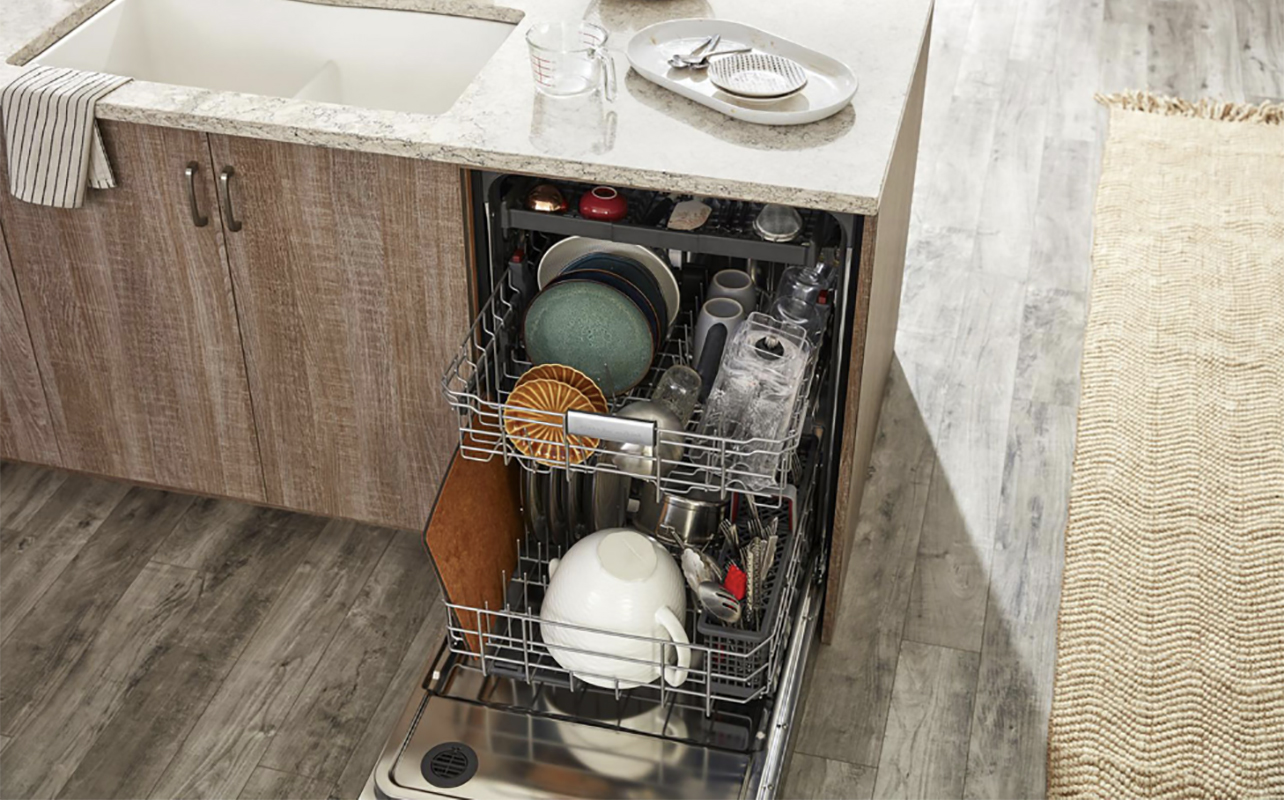
Regular maintenance can prevent many common drainage issues and extend the lifespan of your dishwasher.
- Clean the filter monthly: Regular cleaning prevents debris buildup that can lead to clogs.
- Scrape off food residue: Before loading dishes, remove large food particles to reduce strain on the filter.
- Use the correct detergent: Ensure you’re using dishwasher-specific detergent and the appropriate amount to prevent excessive suds.
- Run hot water before starting: Running hot water in the sink before starting the dishwasher ensures optimal cleaning temperatures.
- Inspect hoses and connections: Periodically check the drain hose and other connections for signs of wear or leaks.
Implementing these practices can help maintain your dishwasher’s performance and prevent future drainage problems.
When to seek professional help
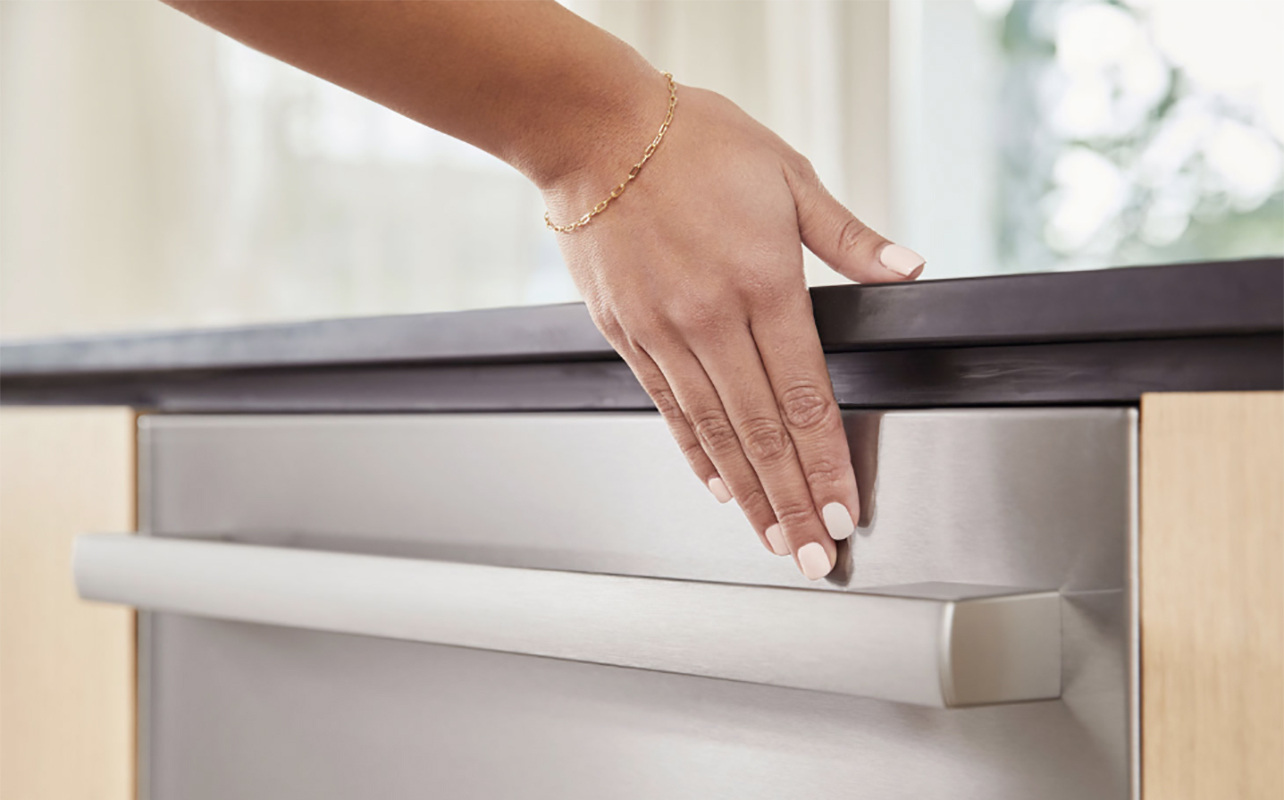
If you have tried everything and still hear gurgling sounds, or end up with a water-filled dishwasher by the end of a cycle, these may be signs of deeper mechanical or electrical issues. If DIY troubleshooting steps don’t resolve the drainage issue, it may be time to consult a professional. Scenarios that warrant expert assistance include:
- Persistent drainage problems: Ongoing issues despite following troubleshooting steps.
- Unusual noises or odours: Frequent strange sounds or smells could indicate mechanical or electrical problems.
- Visible damage: Cracks, leaks, or other visible signs of damage to components will require professional assistance, potentially replacement parts.
Best Buy’s Geek Squad offers in-home appliance repair and installation across Canada. The trained technicians can diagnose and fix problems quickly, saving you time and frustration.
Final rinse: don’t ignore drainage issues
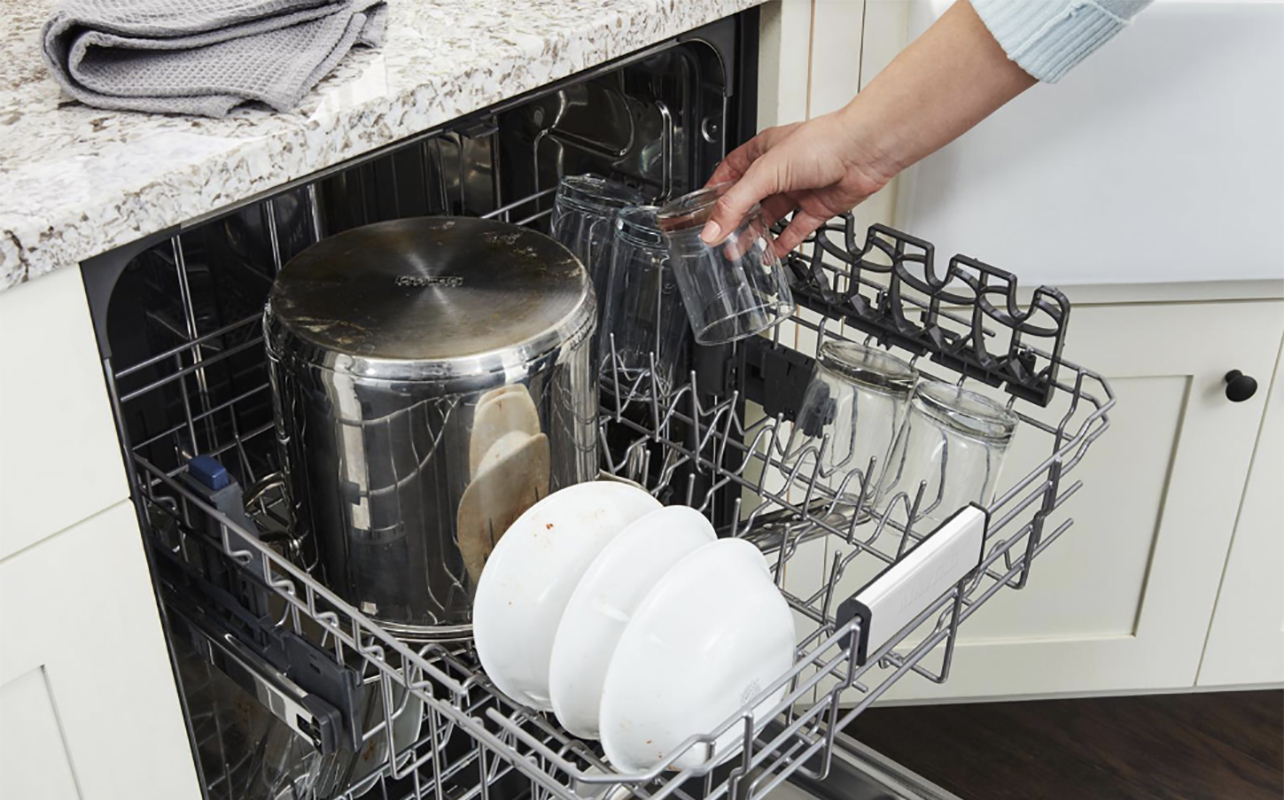
A dishwasher that doesn’t drain can throw off your entire kitchen routine. But it’s usually a problem you can fix at home with some patience and troubleshooting. With a little knowledge and regular maintenance, you can often tackle the issue yourself.
By cleaning filters, checking hoses, and following proper detergent practices, you can keep your dishwasher running smoothly for years to come. When in doubt, expert help is just a click away.
Ready for an upgrade or need parts? Browse the full selection of dishwashers at Best Buy to find reliable models with advanced drainage systems and features built for convenience.
This article was drafted using AI technology and then reviewed, fact-checked, and revised by a member of our editorial team.





